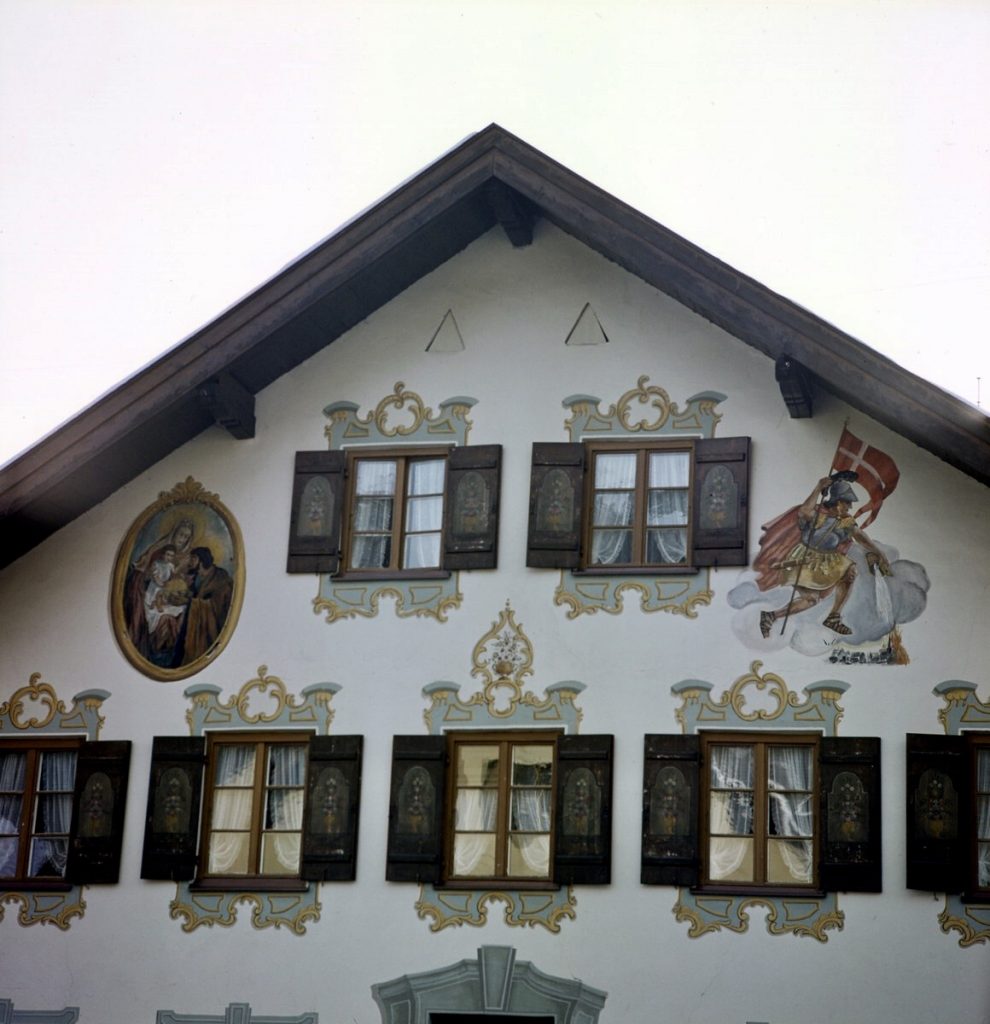Lüftlmalerei (We Know) have been Lost Forever
Am Lyzeum
In 1928, according to Rudolf Härtl in his book, Heinrich Bickel – Der Freskenmaler von Werdenfels (1990), at Am Lyzeum 11, Heinrich Bickel painted a lüftlmalerei of a hermit playing the violin in the mountains, surrounded by animals.
However, in 2020, the walls of the building are blank.
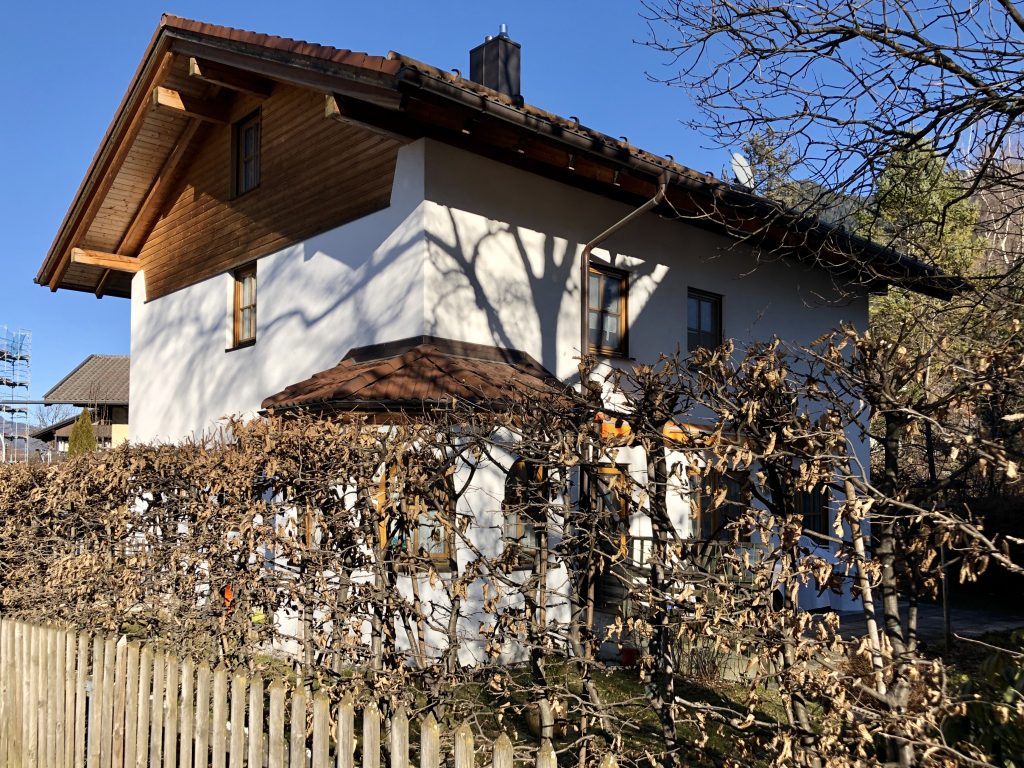
Hauptstraße

The Von Steuben Hotel in Garmisch was owned and operated by the U.S. Armed Forces since it opened in 1954.
Above the front door, a lüftlmalerei of General Steuben on horseback and a banner reading “Anno Domini 1778” had been painted by Heinrich Bickel in 1954.
General Friedrich Wilhelm August Heinrich Ferdinand Steuben (1730 – 1794), also referred to as Baron von Steuben, was a Prussian and later an American military officer. He served as Inspector General and a Major General of the Continental Army during the American Revolutionary War. He is credited with being one of the fathers of the Continental Army in teaching them the essentials of military drills, tactics, and discipline. He wrote Regulations for the Order and Discipline of the Troops of the United States, the book that served as the standard United States drill manual until the War of 1812. He served as General George Washington’s chief of staff in the final years of the war.
However, the hotel closed on April 15, 2003, and in July 2009, the building was razed.
A REWE grocery store now stands in its place.
Photos, diagrams, maps and more from the hotel while it was still in operation can be found online at www.usarmygermany.com.
An article from the local newspaper about the demolition can be found online here.
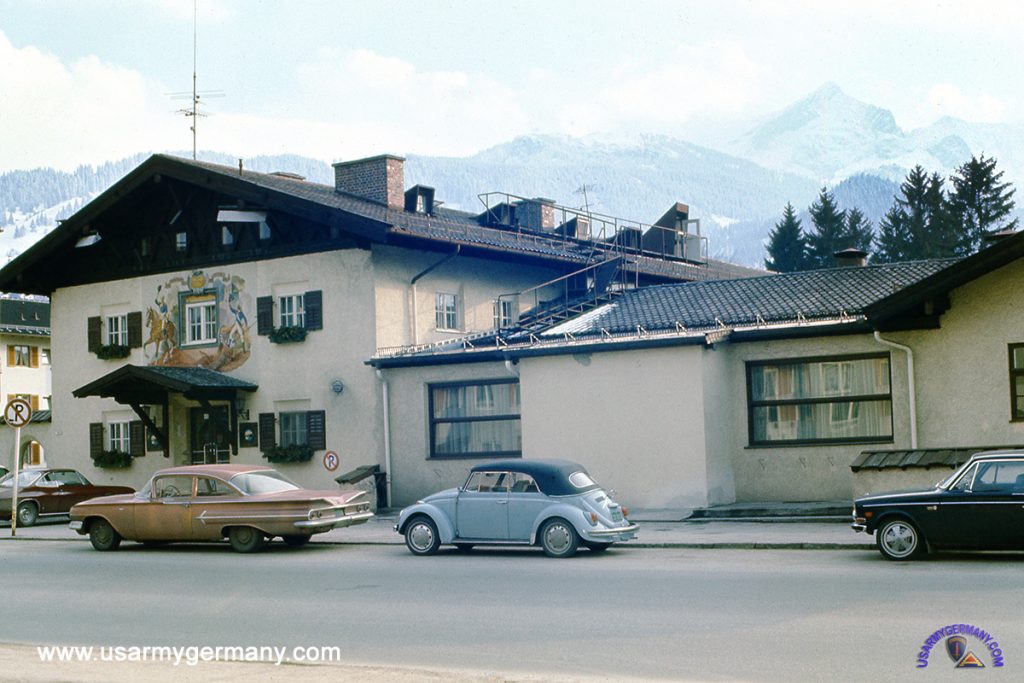
In 2019-2020, the nearby Saint Irmengard Catholic School was renovated and an addition was added. With all that construction, the building that had been at Hauptstraße 43 was razed.
On the gable facing the street, however, had been a lüftlmalerei by Sebastian Pfeffer which concisely illustrated the religious and political history of the region.

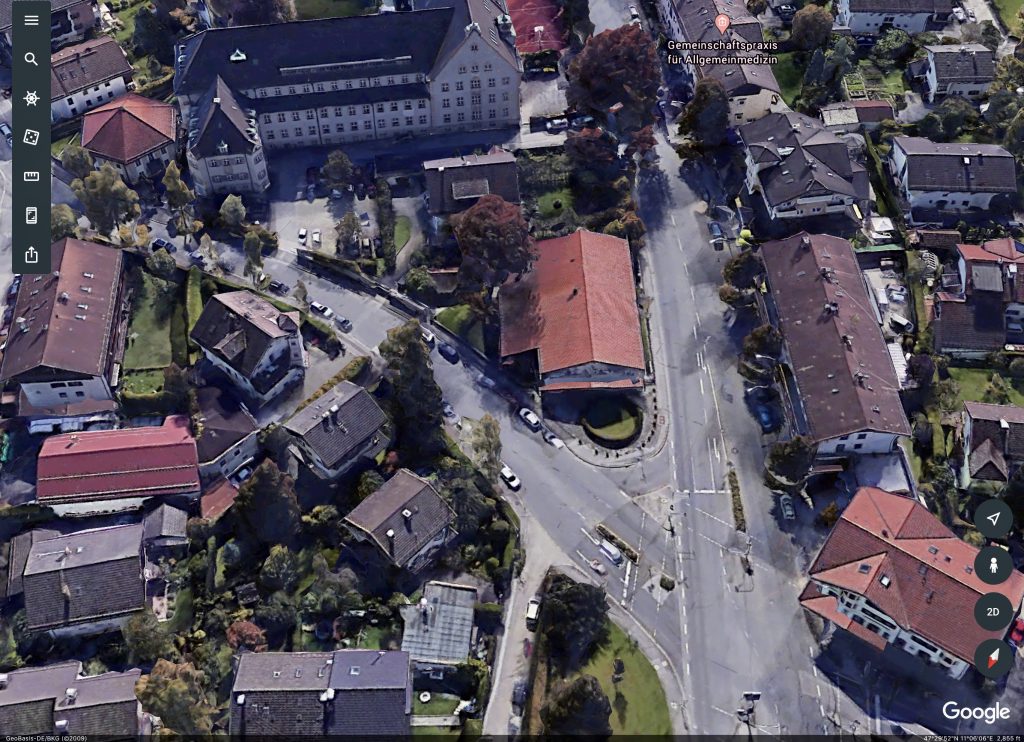

Ludwigstraße
In 1981, the walls of Ludwigstraße 15, “Lödermann-Haus,” had a lüftlmalerei by Sebastian Pfeffer depicting a crib scene with the birth of Jesus in alpine style.
In 2019, after renovation, the walls of the building were blank.
An article detailing the repainting can be found online here.

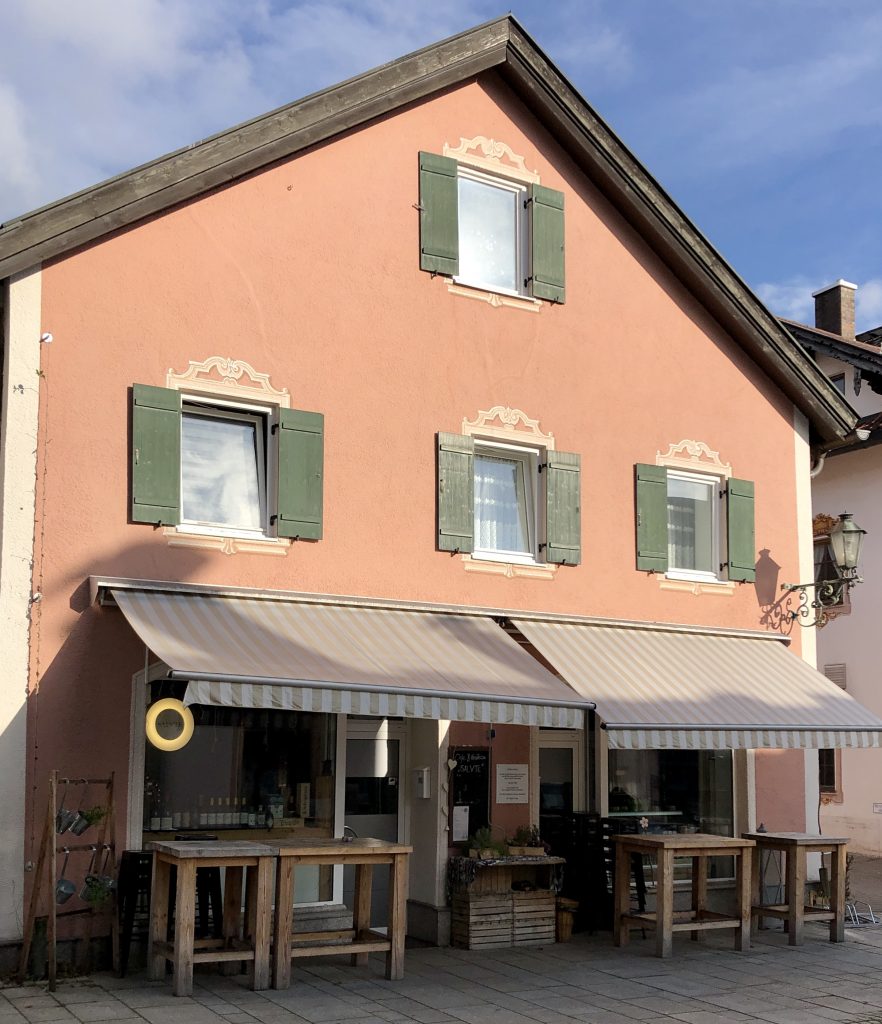
Ludwigstraße 30.
Although the building now only has lüftlmalerei around the windows, at one time it had a large narrative lüftlmalerei on its front, as you can see here in a photograph taken by August Beckert between 1928 and 1930.

Unfortunately, after renovation, the lüftlmalerei on Ludwigstraße 33 were lost, as you can see in this photo taken by August Beckert some time between 1920 and 1930.

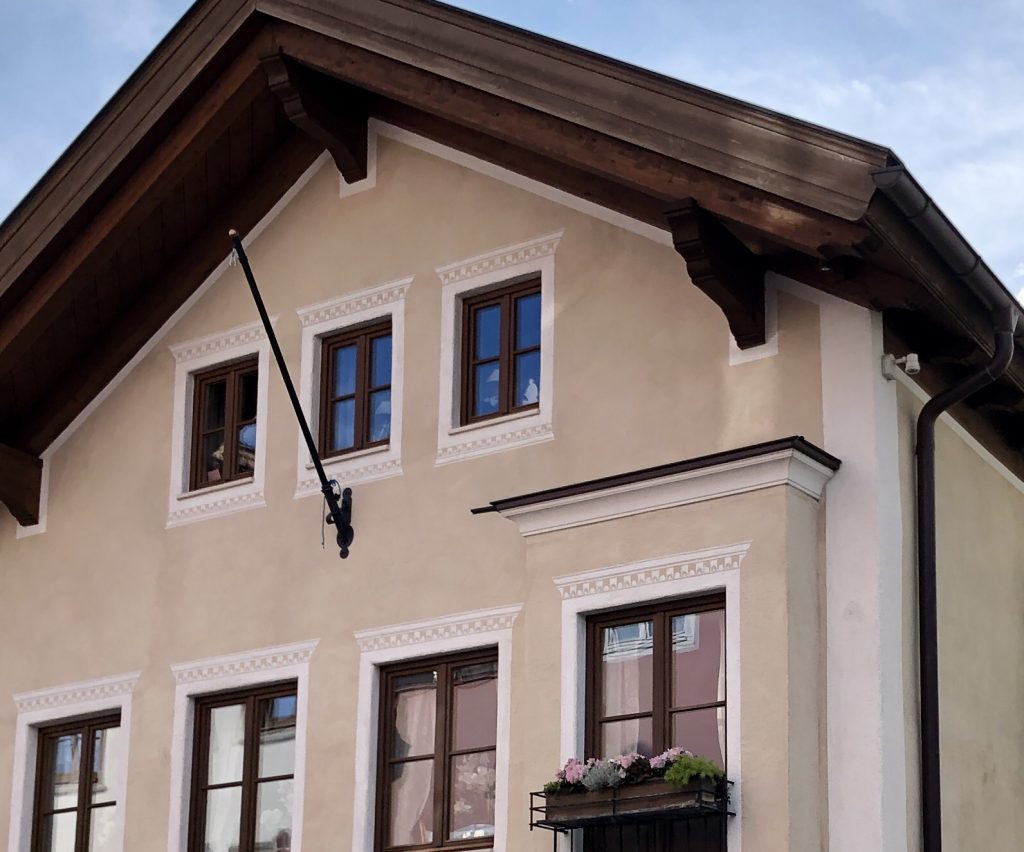
In their book Die Strassennamen von Garmisch-Partenkirchen (2001), the authors included a photograph of “Das Brod Haus” — a tiny building covered in lüftlmalerei — as it looked in 1934.
The Brodhaus was a bread shop until 1868, then a general store. In the 1920s, Heinrich Bickel painted it with frescoes, and, for a time, it housed the Partenkirchen Tourist Office.
The building used to sit just beside the pharmacy at Ludwigstraße 50. It has since been demolished and its lüftlmalerei lost forever.
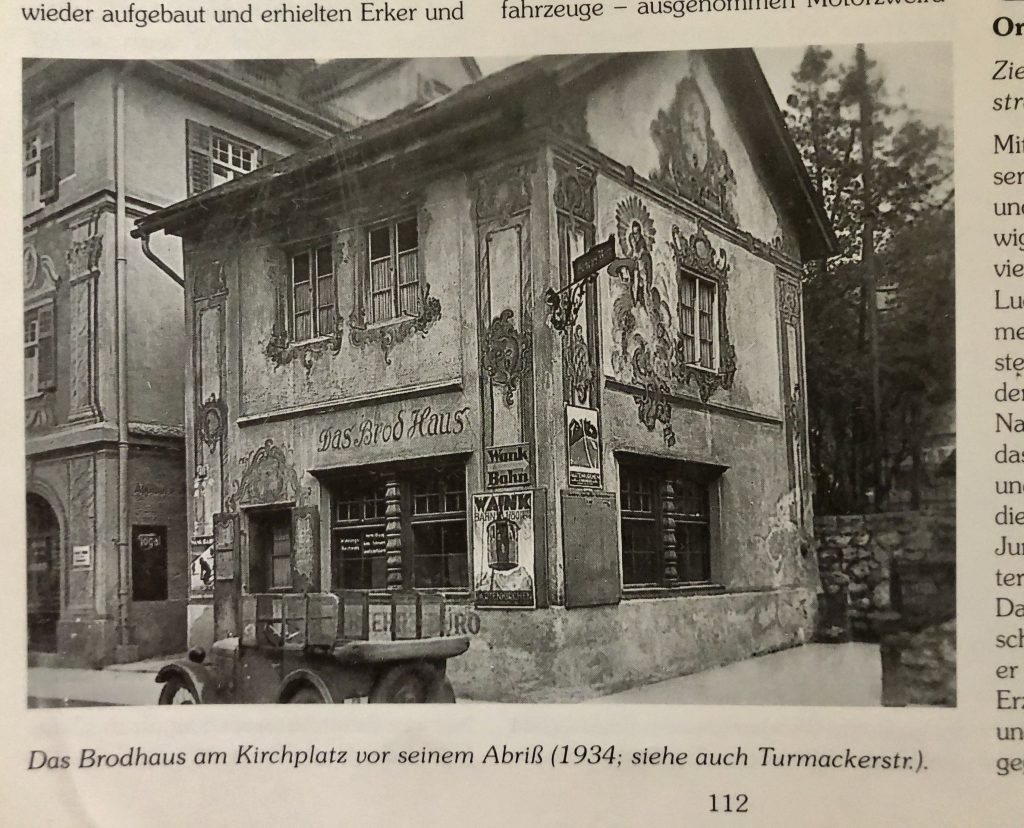

Marienplatz
Marienplatz 12, now the Atlas Posthotel, once a guesthouse “zur Traube” — whose owners had the right to import wine from Italy — and for a long time the “Gasthaus zur Post,” or the Garmisch post hotel.
In 1900, author Otto Aufleger noted in his book, Bauernhäuser aus Oberbayern und angrenzenden Gebieten Tirols, that this “house was completely rebuilt towards the end of the 19th century and was robbed of its paintings.”
As reference, he included two photographs by Bernhard Johannes showing that the hotel once had lüftlmalerei depicting building the second temple in Jerusalem, with the cedars of Lebanon being brought to the construction site by rafters in traditional Bavarian costumes painted by none other than “The Lüftlmaler from Oberammergau” himself, Franz Zwinck, in 1778.
Even though this painting can no longer be seen at the Atlas Post Hotel, this lüftlmalerei can still be seen — only on a completely different building, about 2 kilometers away.
In 1925, Professor Carl Reiser (1877-1950) — who knew the mural on the Garmisch Post Hotel, being the son of a royal Bavarian postman stationed in Partenkirchen — reproduced Zwinck’s lüftlmalerei almost exactly on the gable of the newly built building at what is now Rathausplatz 13.
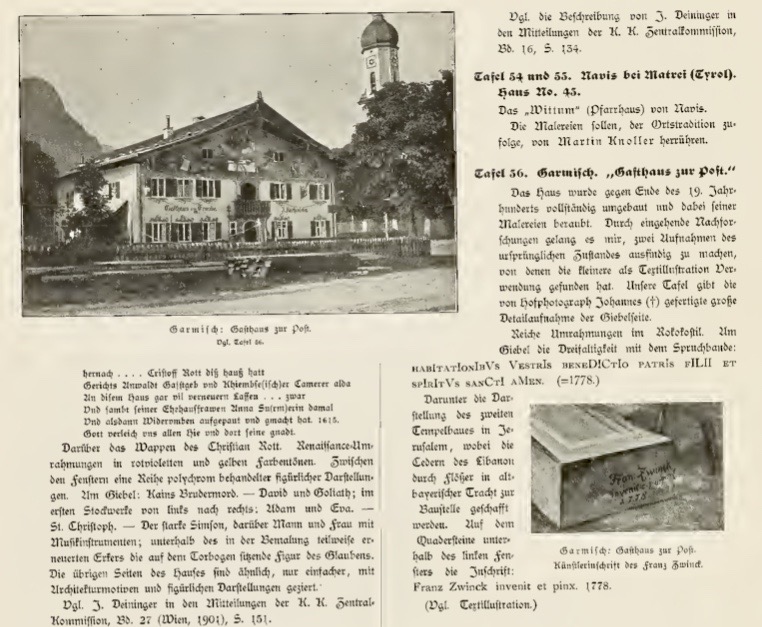
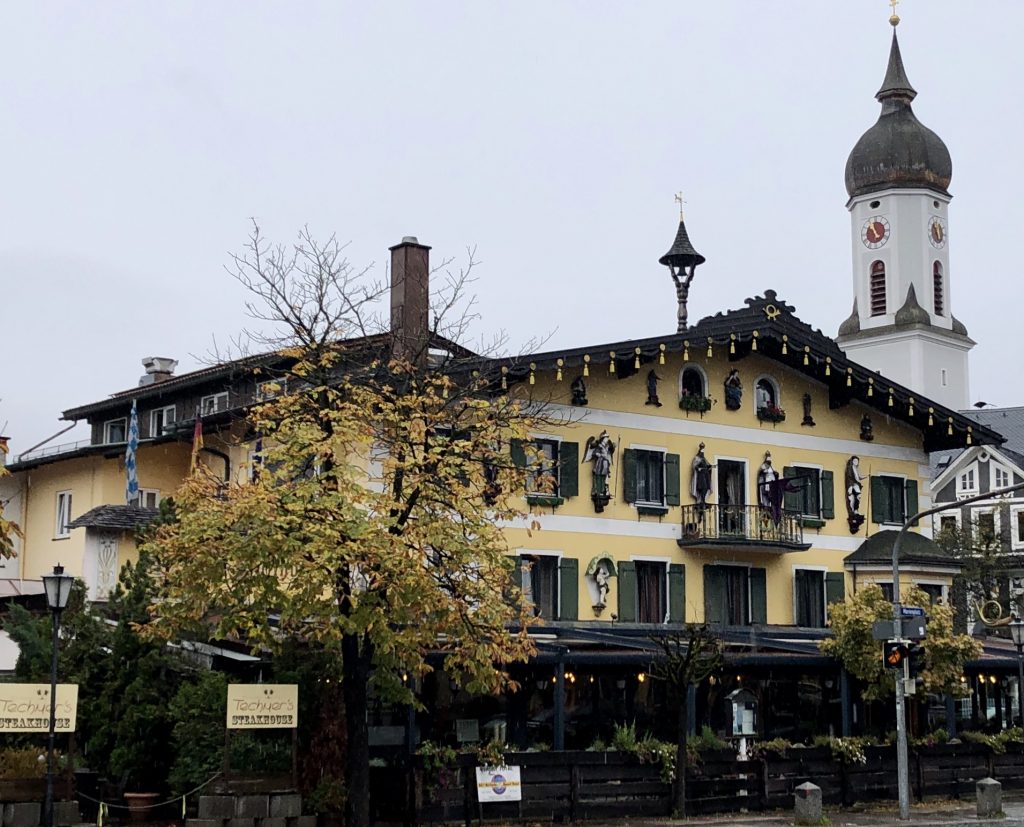
Mohrenplatz
At the Bavarian State Archives online, you can see this photo taken by Max Beckert some time between 1900 and 1905 of what, at that time, was a building at Mohrenplatz 1 with lüftlmalerei which have since been lost.


Münchner Straße


Although there is no lüftlmalerei at Münchner Straße 23 now, at the Bavarian State Archives online, you can see a photo taken by Franz Kölbl in 1970 of the mural that used to be there.
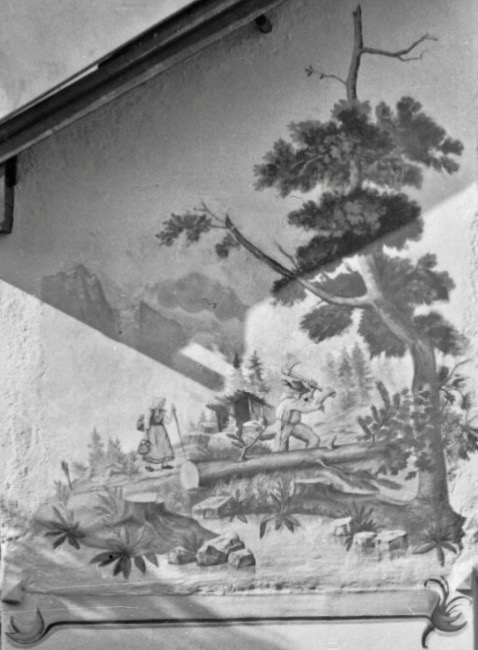
Pitzaustraße
Although there are no lüftlmalerei at Pitzaustraße 12 today, as you can see in this photo from the Bavarian State Archives online, there used to be a mural on the outer wall of the Children’s Hospital there showing children playing.

Unknown Addresses
Online, at the Bildindex der Kunst und Architektur — an open German database of 2.2 million photographs of 1.7 million artworks and architectural objects curated by the Bildarchiv Foto Marburg — there are a number of digital reproductions of photographs of lüftlmalerei in Garmisch-Partenkirchen.
Some of those lüftlmalerei can now only be seen in pictures:
In this photo taken some time around 1920, one can see above the door of an unknown residential building the image of Saint Mary holding an infant Jesus on her lap.
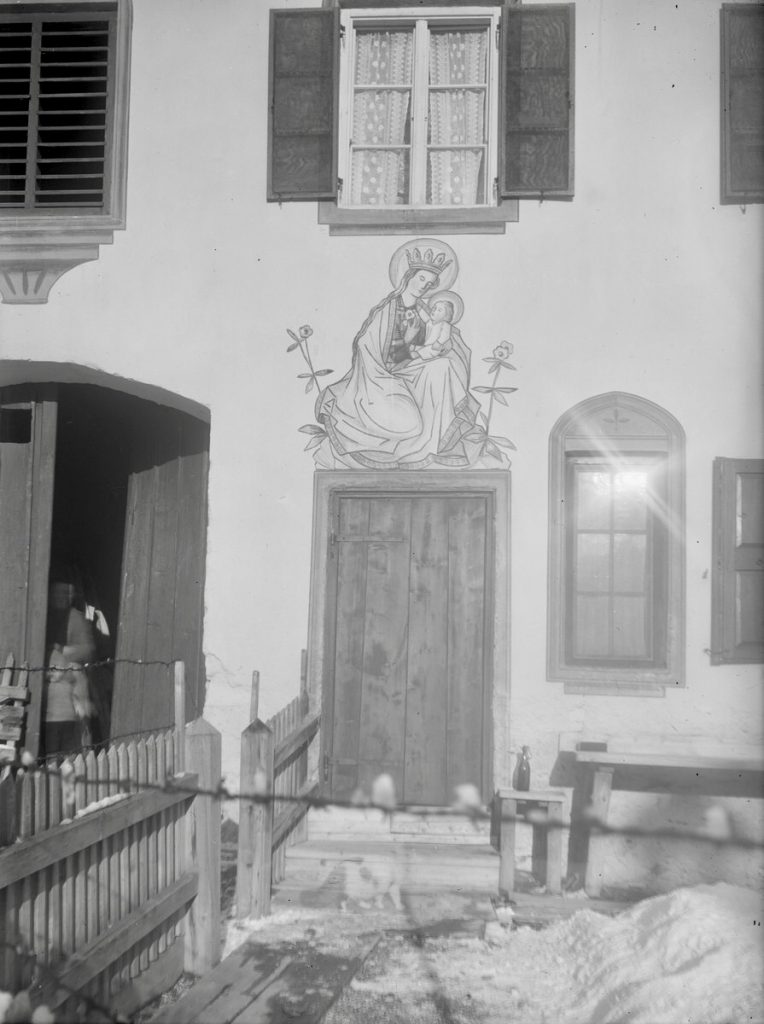
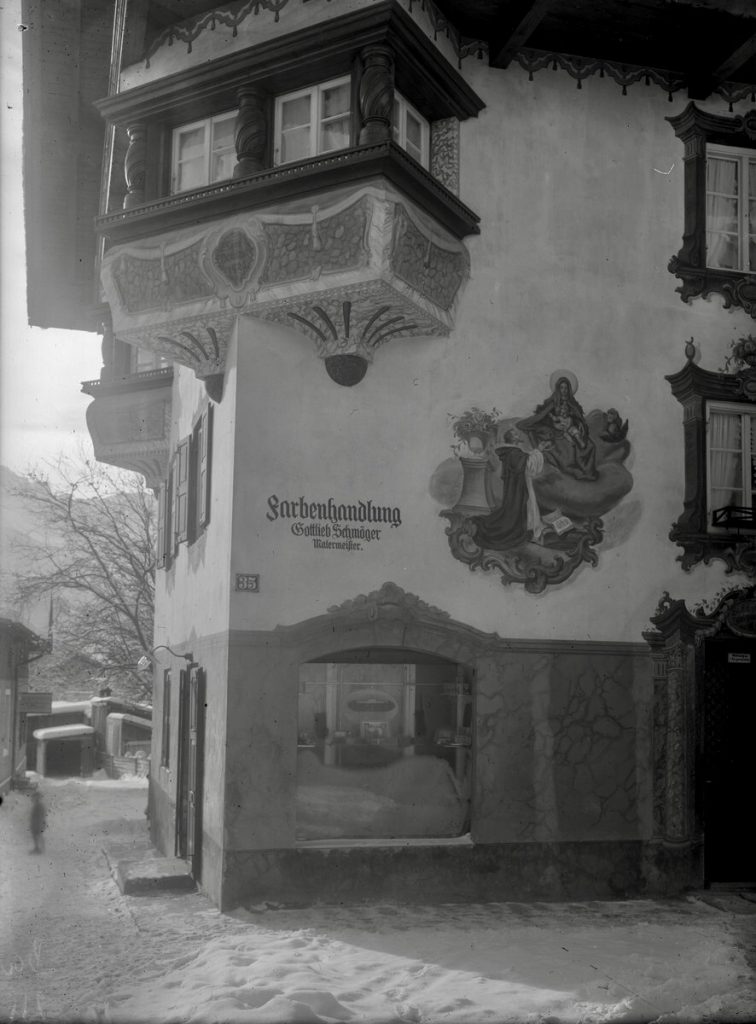
In this 1925 photo, one can see a lüftlmalerei of Saint Mary holding an infant Jesus on the wall of Gottlieb Schmöger’s paint shop.
Schmöger was not only a master painter, he was also the elected mayor of Partenkirchen from 1920 until 1929.

In this photo taken some time around 1925, one can see a lüftlmalerei of Saints Isidore and Notburga.
Born in Madrid, Isidro de Merlo y Quintana, also known as “Isidore the Farmer,” was a Spanish farmworker who lived between 1070 – 1130. Known for his piety toward the poor and animals, he is the patron saint of farmers, peasants, day laborers, as well as brick layers.
Saint Notburga, who lived in what is now the Tyrol region of Austria between 1265 and 1313, also known as “Notburga of Rattenberg” or “Notburga of Eben,” is the patron saint of servants and peasants.
In this photo taken some time around 1925, one can see a lüftlmalerei of a Bavarian family harvesting apples.
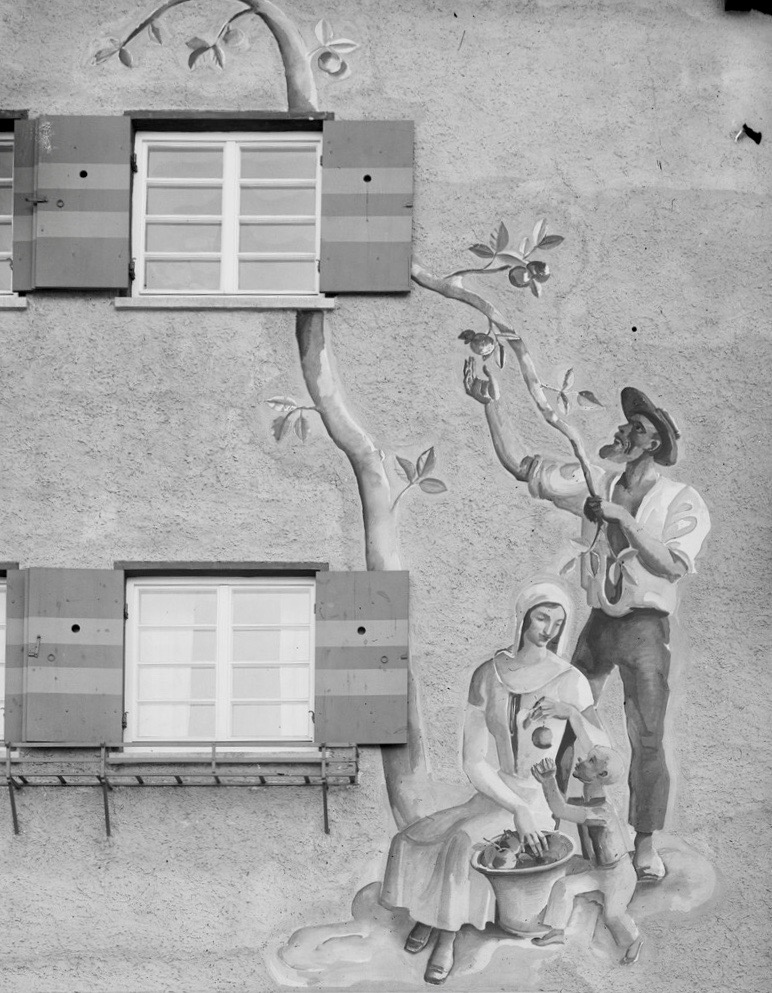
In this photo from 1927, one can see a lüftlmalerei of the parable of the Good Samaritan (Luke 10: 30-37).
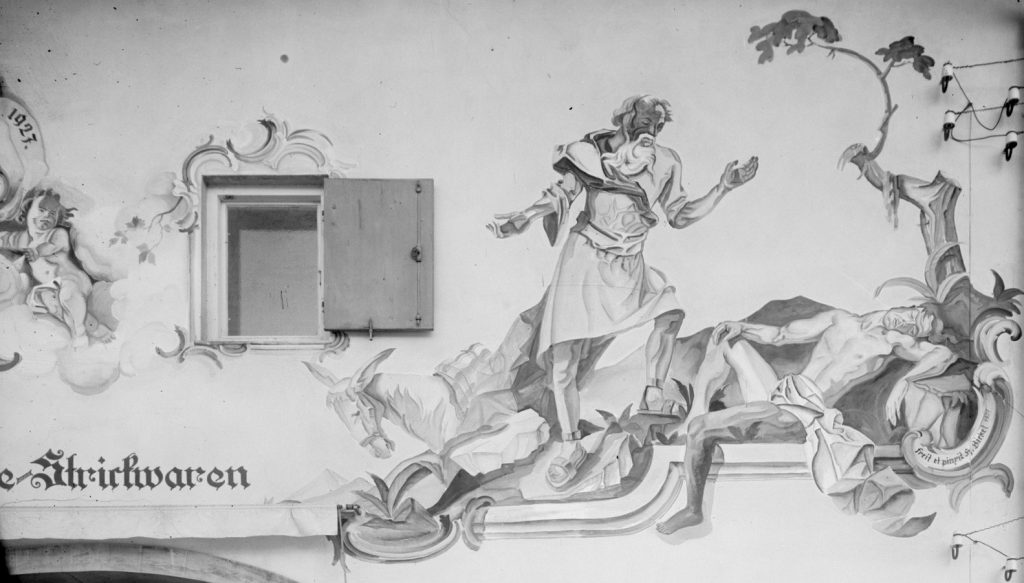
In this photo taken some time around 1920, you can see the lüftlmalerei depicting Holy Roman Emperor Louis the IV (1282-1347), known as “Ludwig the Bavarian,” returning from his Italian migration and founding the Ettal Abbey near Oberammergau in 1330.
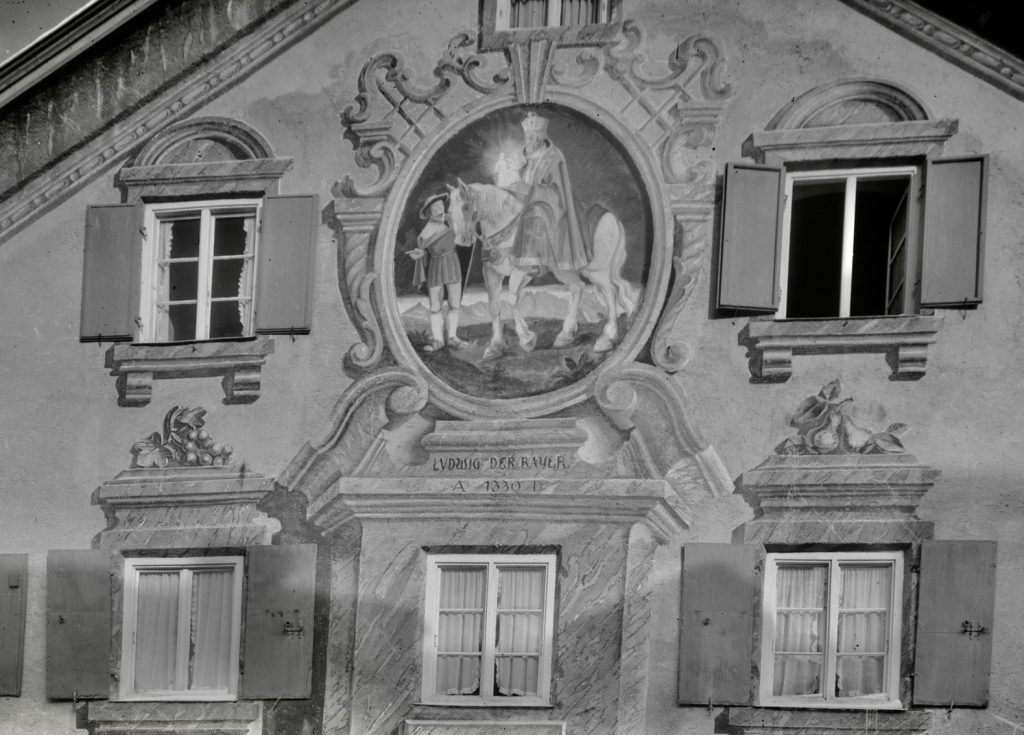
In this photo taken some time around 1925, you can see the lüftlmalerei that used to be above Otto Schiffmann’s sports equipment and clothing store in Garmisch.
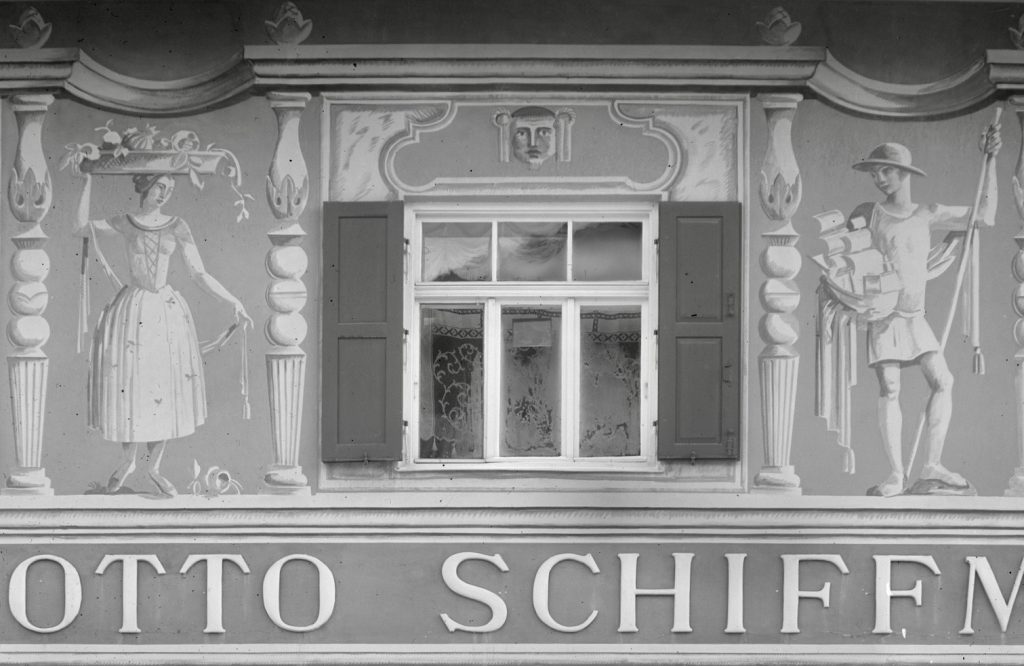
In this photo, taken some time between 1960 and 1975 by famed German photographer Erika Groth-Schmachtenberger, one can see separate lüftlmalerei of the Holy Family and Saint Florian.
